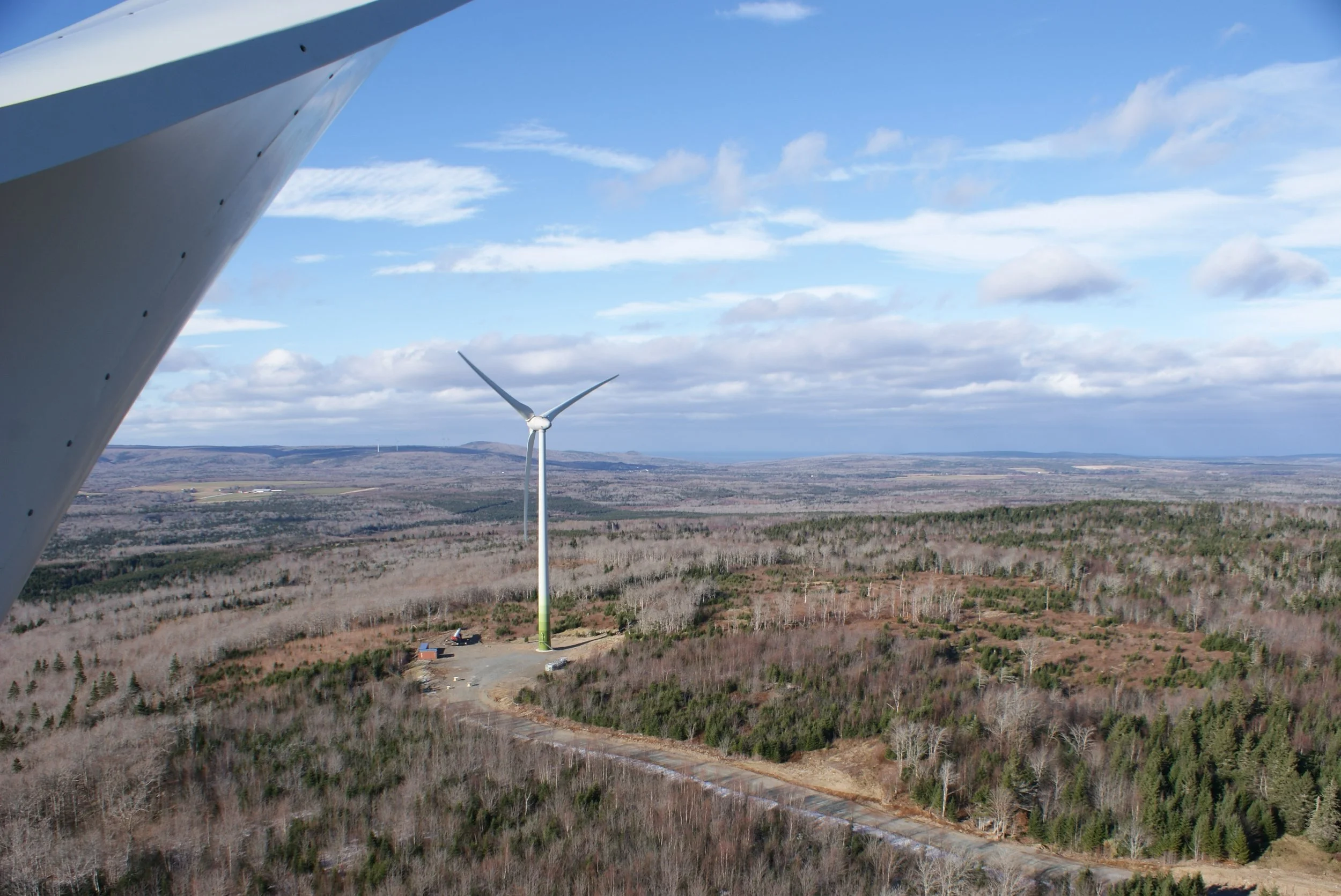A more joyful approach
One Nova Scotia renewable energy company is learning about the power of connection through Indigenous partnerships.
Official opening of the Fairmont Wind Project. Photo courtesy of Natural Forces.
Austen Hughes, vice president of project finance with the firm Natural Forces, vividly remembers the official opening of the Fairmont Wind Project, referring to it as “the starting block for our future partnerships with First Nations.” It was November 24, 2012, and Hughes, and many of the project’s 160 individual investors were all gathered on a hill some six kilometres north of Antigonish.
“I believe we had 100 investors on a windy hill in November, and it was freezing, and we had champagne...and it was really nice,” Hughes says.
Founded in 2001 in Nova Scotia, for the last decade Natural Forces has focused its operations in the Maritimes on wind and solar projects developed and owned in partnership with Indigenous communities.
The company currently has eight projects under development in Atlantic Canada, and 15 in operation.
Natural Forces’ Amherst project, which consists of two wind turbines with a combined capacity of six megawatts, powers the equivalent of 1,357 homes per year. Natural Forces has also partnered with individual Indigenous communities on many projects, but Hughes says the Amherst Wind Energy Project was the first partnership with all 13 Nova Scotia First Nations — with more having since followed.
One of those is the Benjamins Mill Wind Project in West Hants, Nova Scotia. Phase one, currently under construction, will consist of eight wind turbines, while future phases could see up to 20 more — ultimately powering 58,000 Nova Scotia homes. Preparation for the project included a Mi’kmaq Ecological Knowledge Study (MEKS), carried out by Membertou Geomatics Solutions. Meg Morris, lead project manager for Natural Forces, says studies like this are standard when the company is working with Indigenous partners.
“It's another look, a different perspective of the site. It’s a combination of speaking with elders and land users and doing interview-based work, as well as taking elders out to the site, seeing what kind of vegetation is there, and if there's anything culturally significant to the Mi'kmaq that might be identified,” Morris says. “It's a really comprehensive study, and a different perspective from an environmental assessment. They go really well hand in hand.”
The Benjamins Mill MEKS, for instance, looked at a five-kilometre radius around the project site, and outlines the history of the region, and how it has been used traditionally by the Mi’kmaq. It also notes the frequency of observation of culturally significant species, including wire birch, teaberry, sedge grass, bear, and coyote.
Morris says she doesn’t believe MEKS assessments have led to significant changes to a project. However, recommendations have included avoiding areas with “culturally significant or important vegetation” or, if that’s not possible, “providing the opportunity for First Nations land users or elders to harvest the vegetation prior to us disturbing it.” Another frequent recommendation, which she says Natural Forces follows, is to have Indigenous monitors on site for construction and post-construction monitoring, “to ensure we adhere to the commitments we made in development.”
One of the new projects Natural Forces is developing is the Wejipek Wind Project, which will be majority owned by the Lennox Island First Nation. The project will see three wind turbines built in the Kinkora area of Prince Edward Island. In a January 2025 interview with CBC, Drew Bernard, energy lead for Lennox Island First Nation, described the advantages of a partnership that gives the community majority ownership: “We want to learn how these projects come together, build capacity within our community while doing that, and, yeah, bring in some revenue and pump some green power to the grid.”
For Natural Forces, working with Indigenous partners makes good business sense. But it’s not just about dollars. “We maintain ownership in our projects, and our First Nations partners are not going anywhere either,” Morris says. “There’s a permanence or long-term outlook in these relationships that really helps people come around to trusting us.”
Hughes says that these partnerships are “a lot more nurturing” than your typical corporate affair. “We have a slide deck where we have two slides, and one of them is Fairmont, the project I was talking about earlier with all the people on the hill having a big celebration. And the second one was a ribbon-cutting that we had with one of our corporate partners — a bunch of suits standing next to a turbine. There was no love there.”
He adds, “We get personally invested, because of the amount of time that we've taken, and the relationship that we have with these partners, and it just it's just very different from the corporate approach. I get a lot more joy from working with some of the partners we’ve had the luxury of working with.”
Climate Stories Atlantic is an initiative of Climate Focus, a non-profit organization dedicated to covering stories about community-driven climate solutions.
Sign up for notifications of our latest free articles. You can unsubscribe at any time.
The project’s two turbines. Photo courtesy of Natural Forces.


